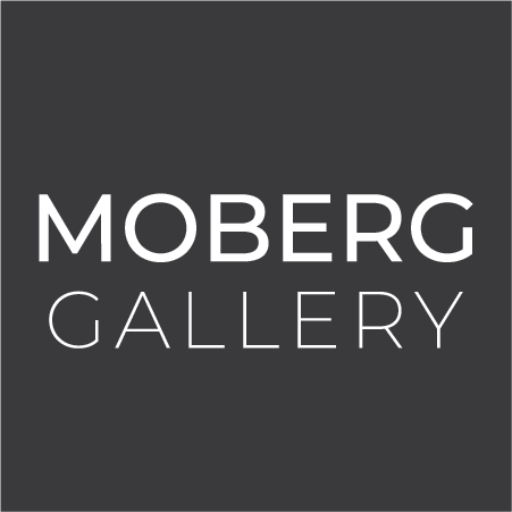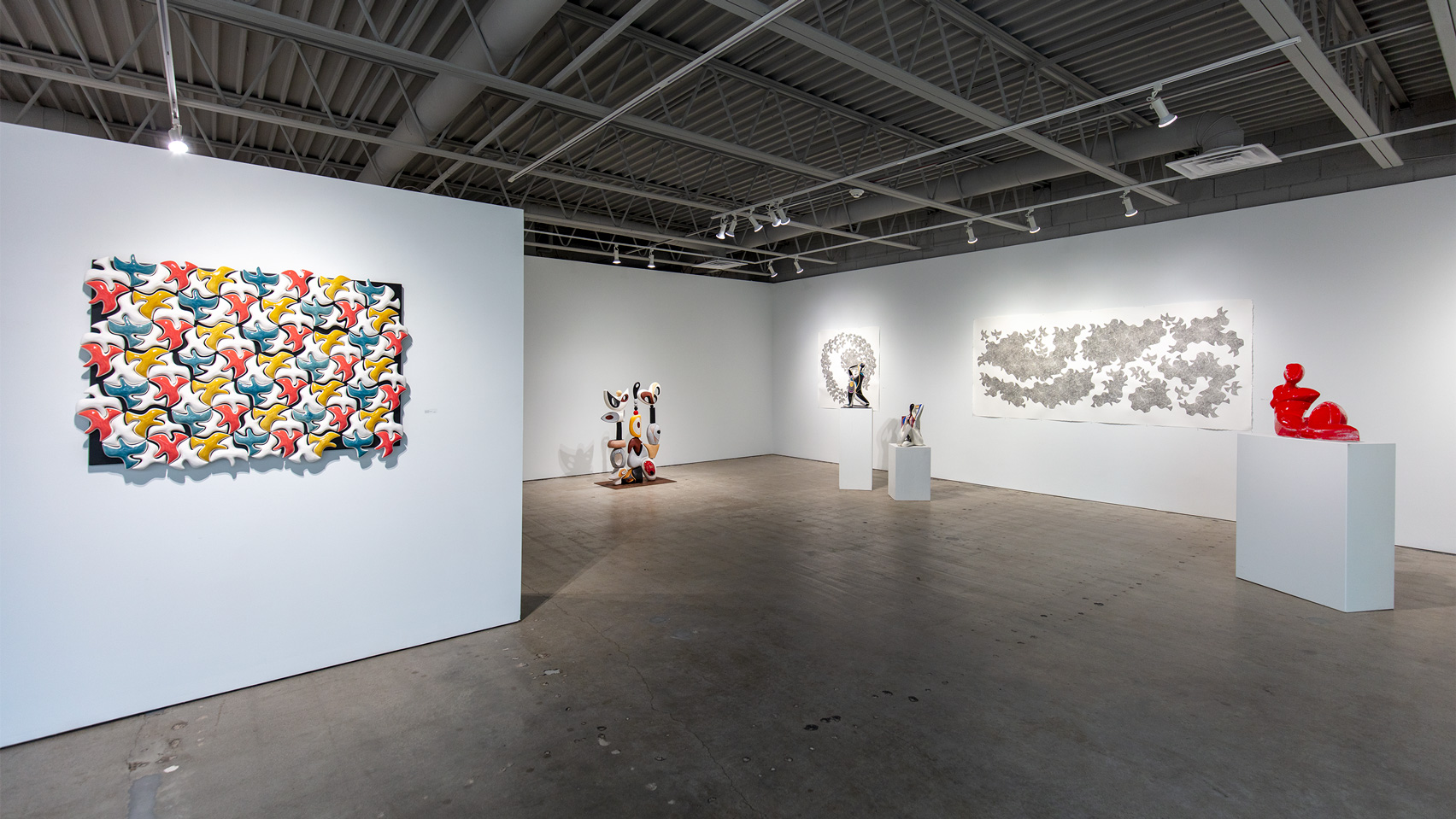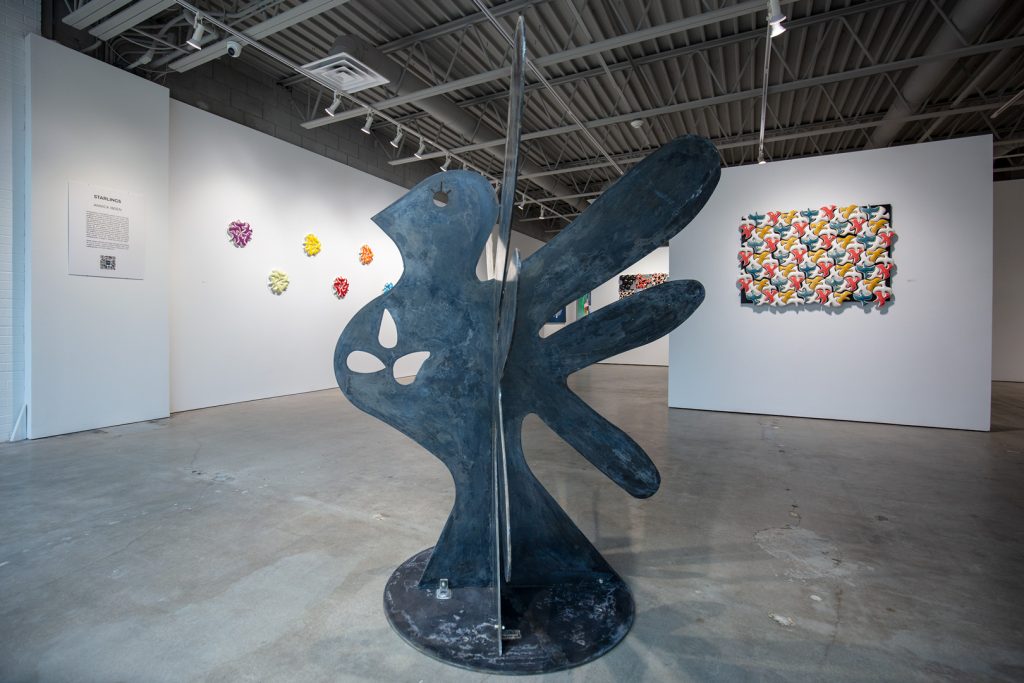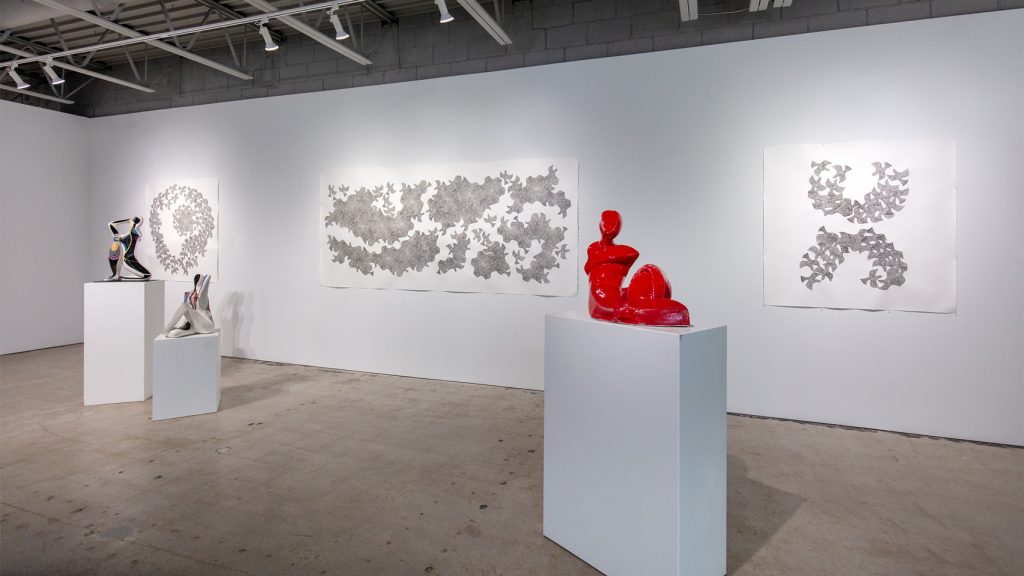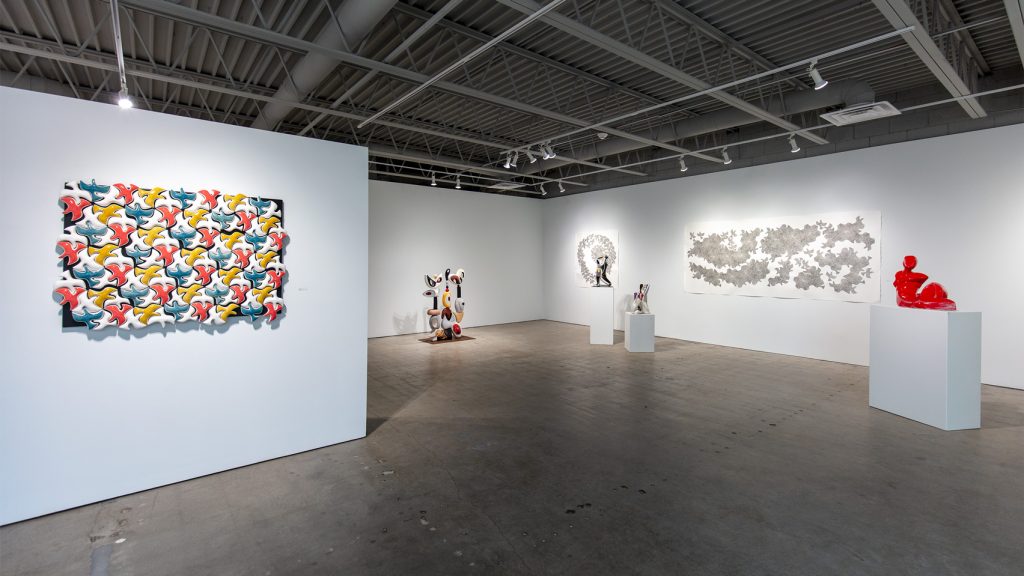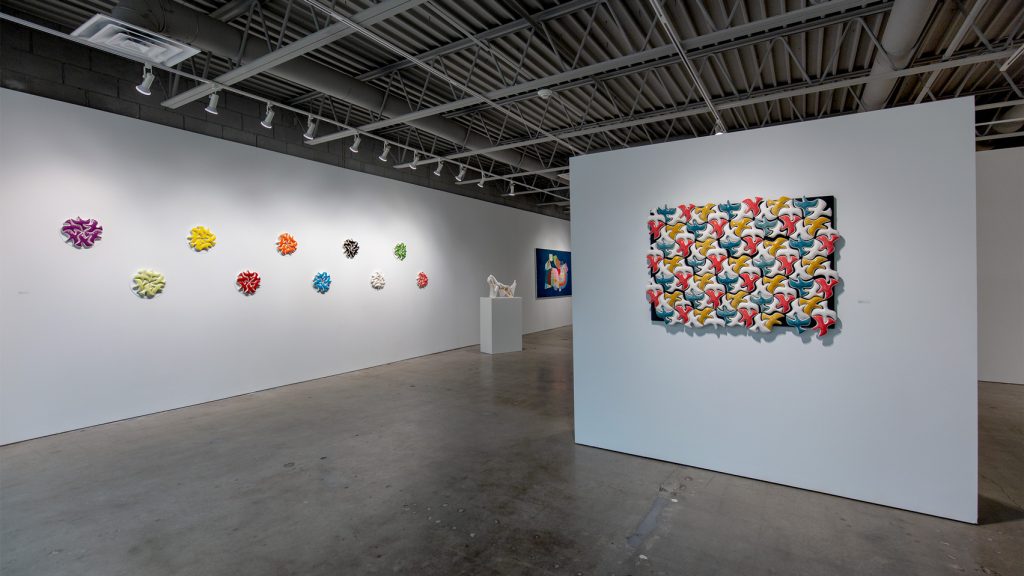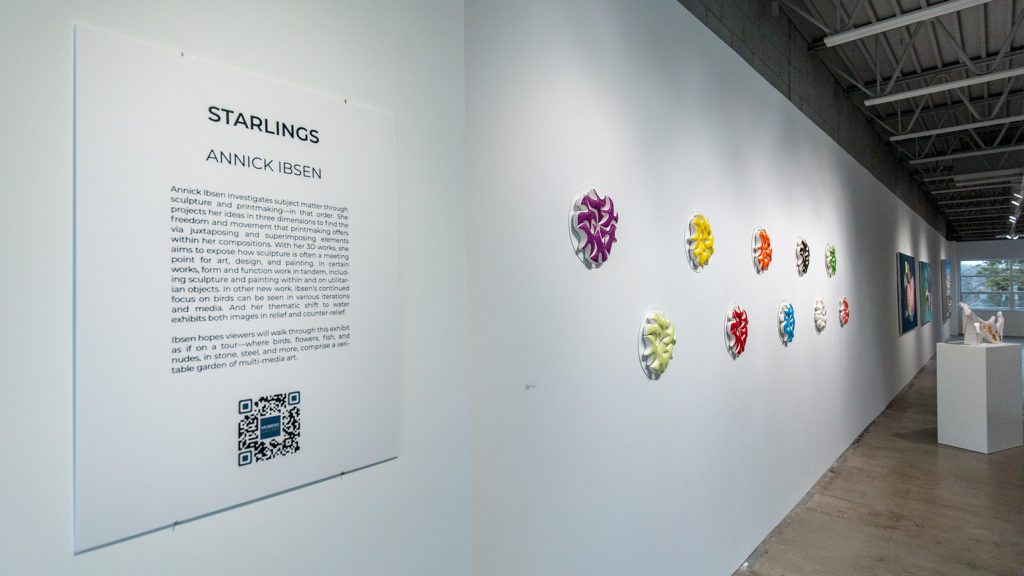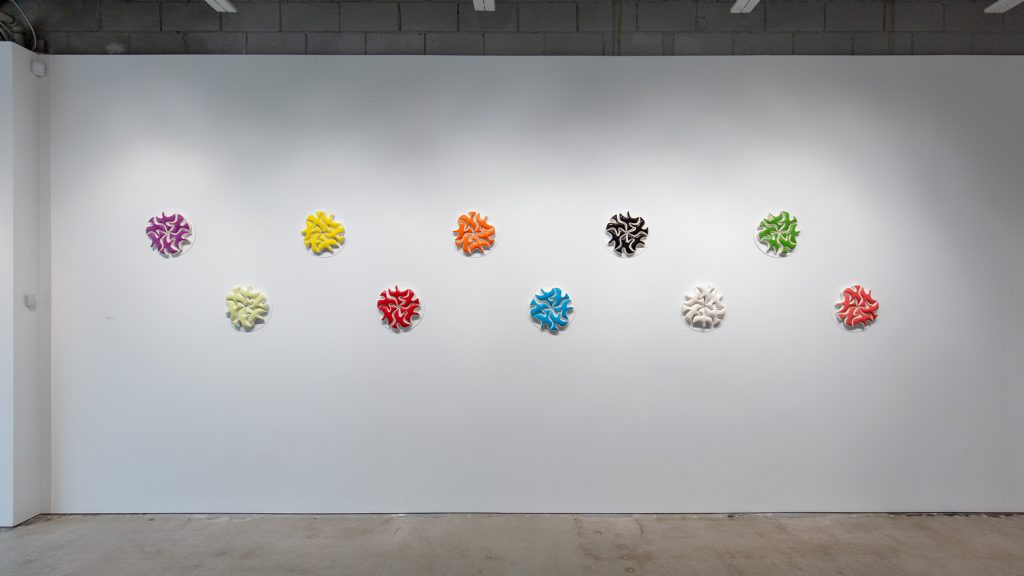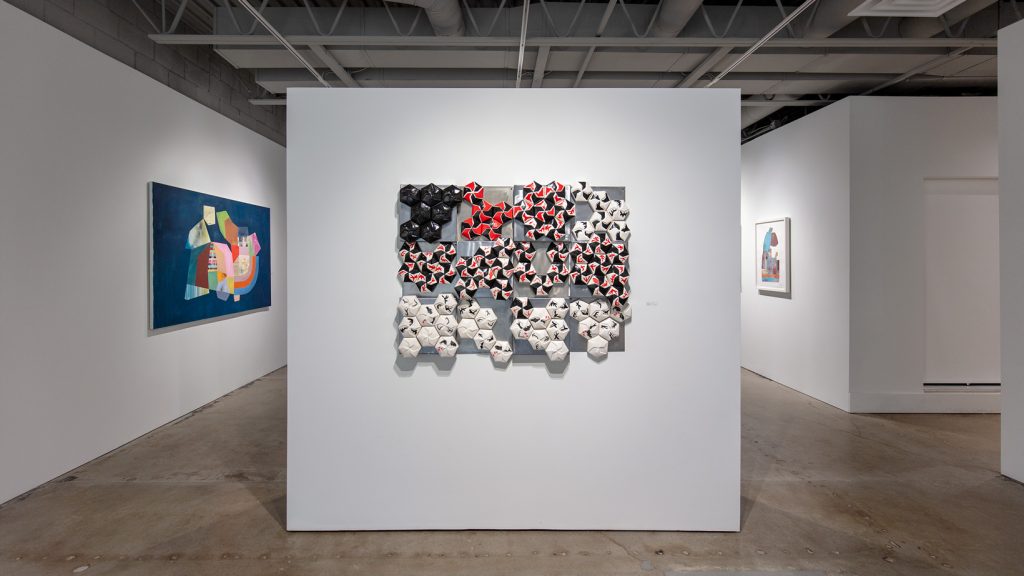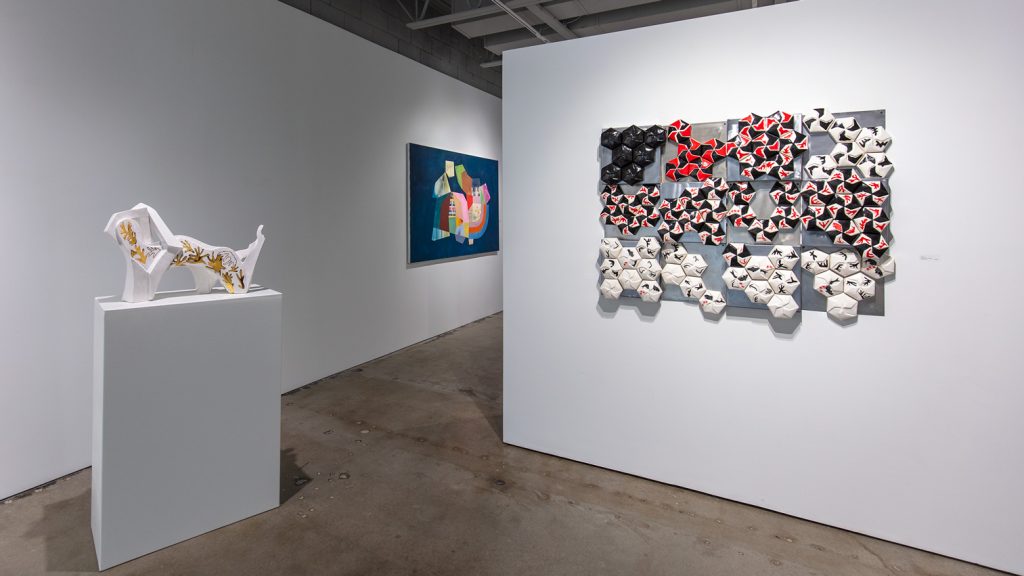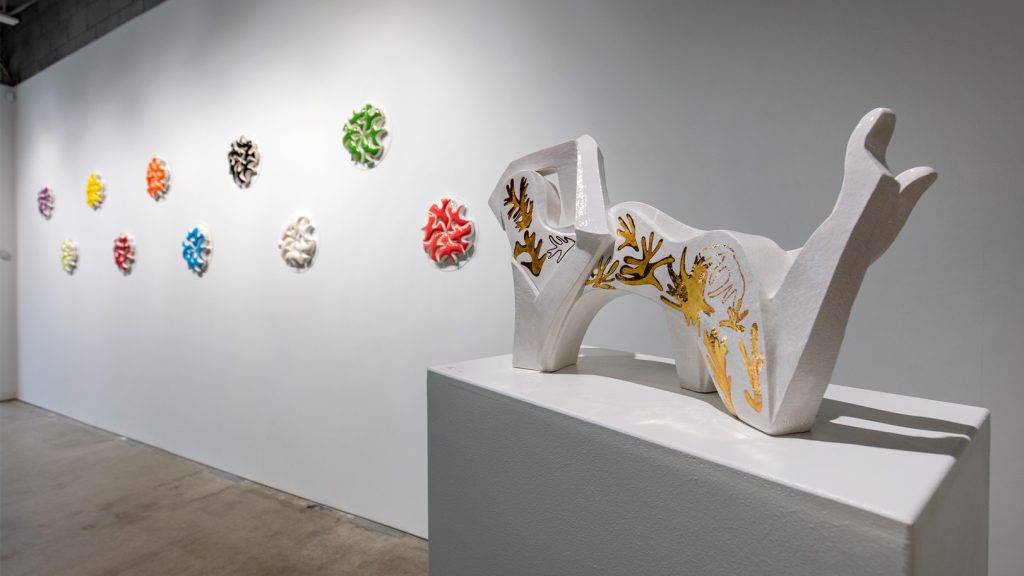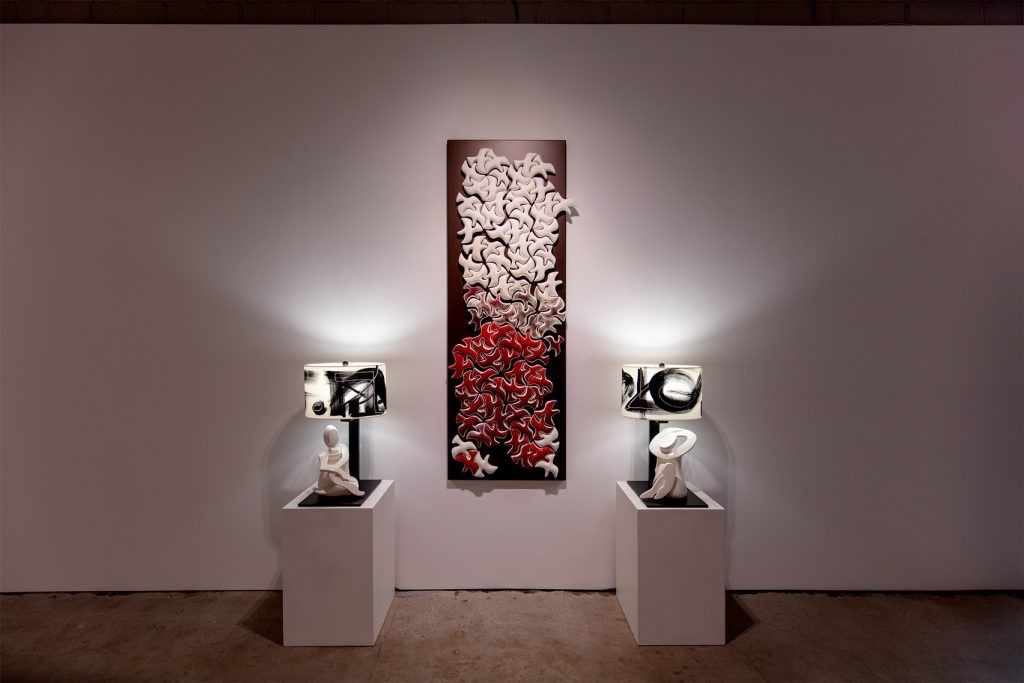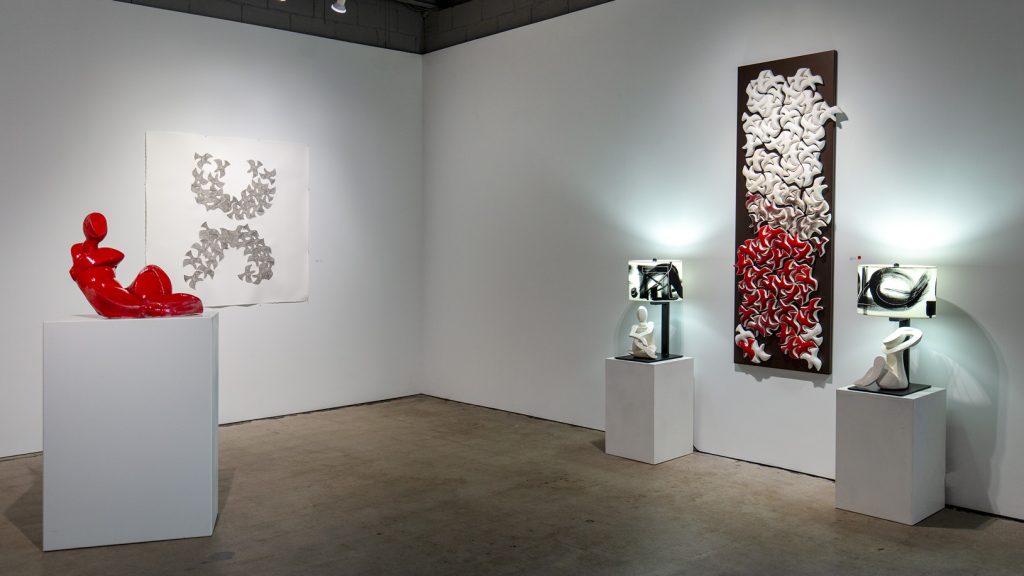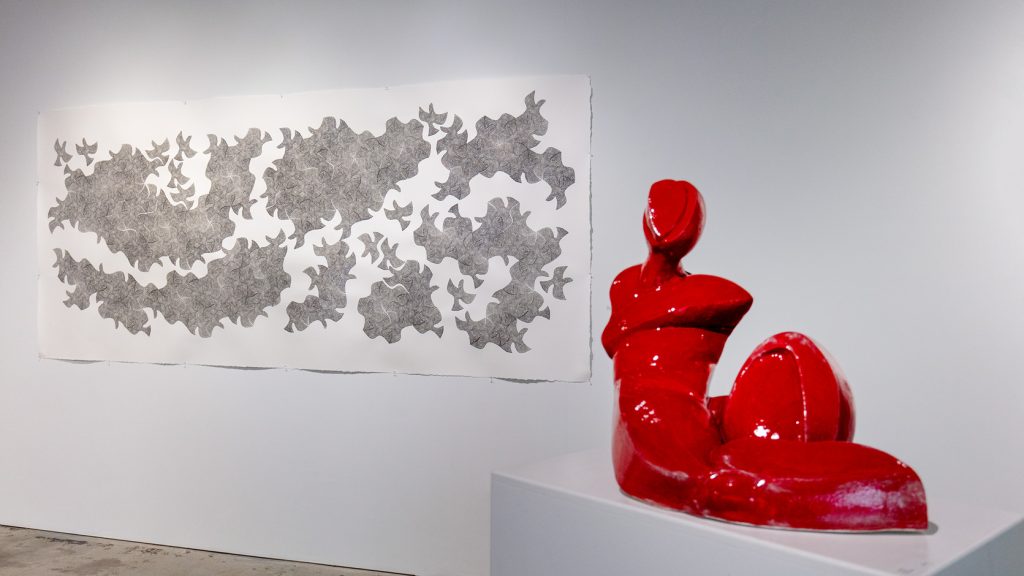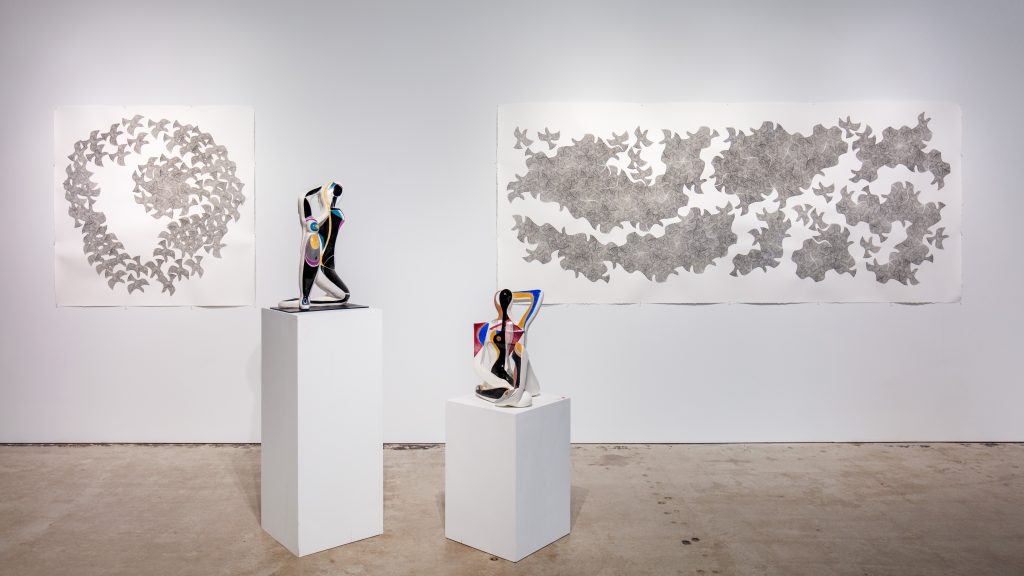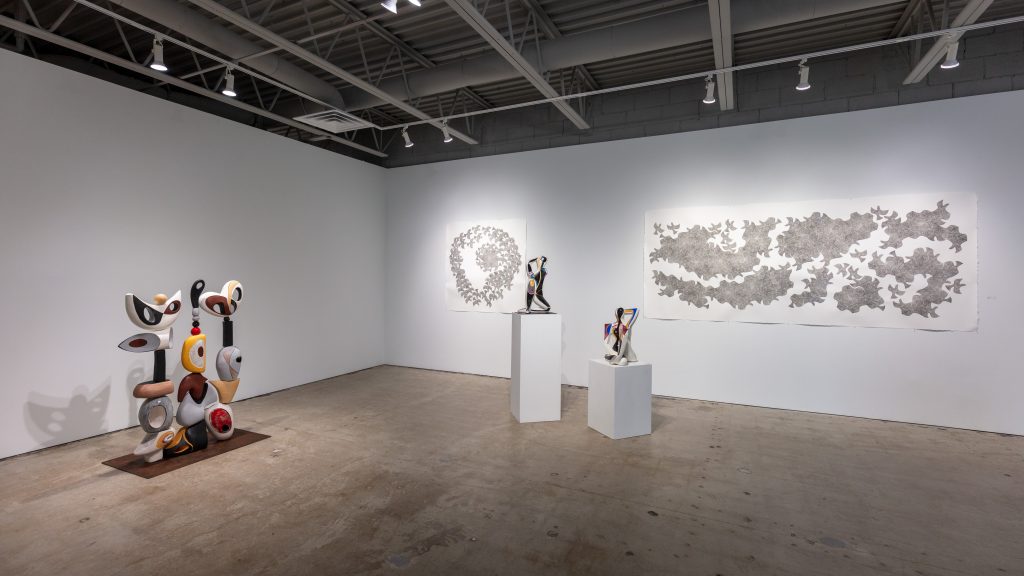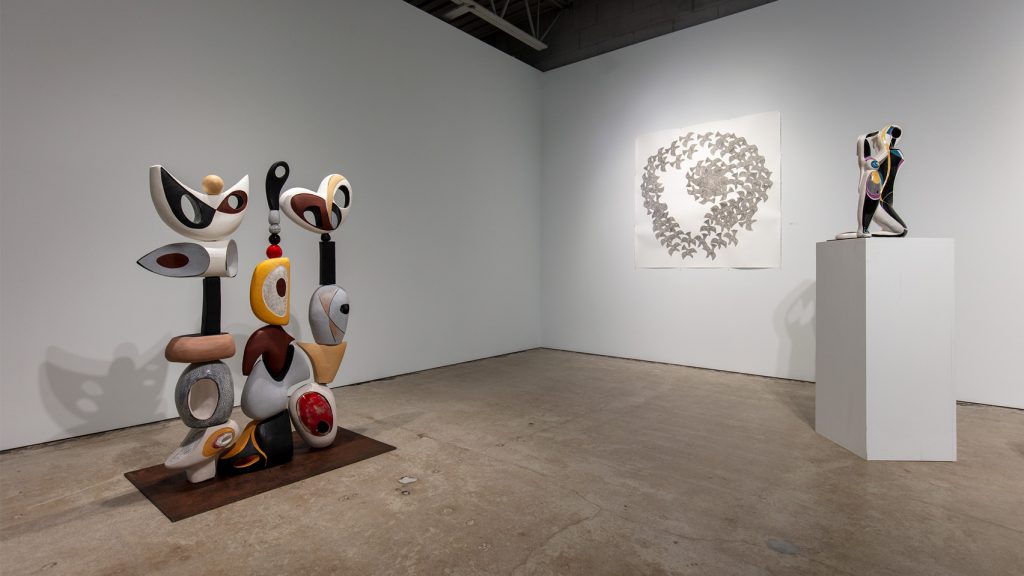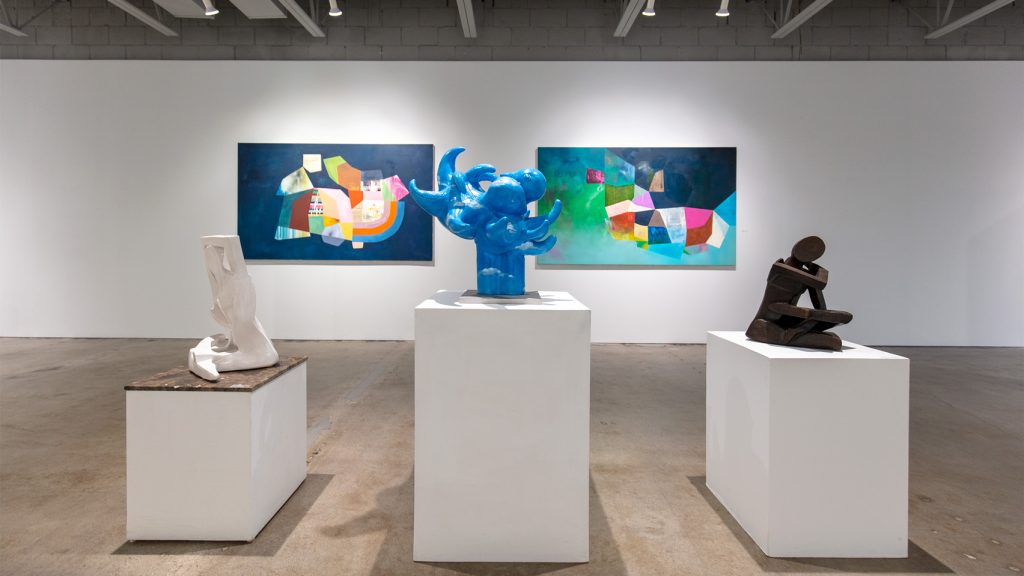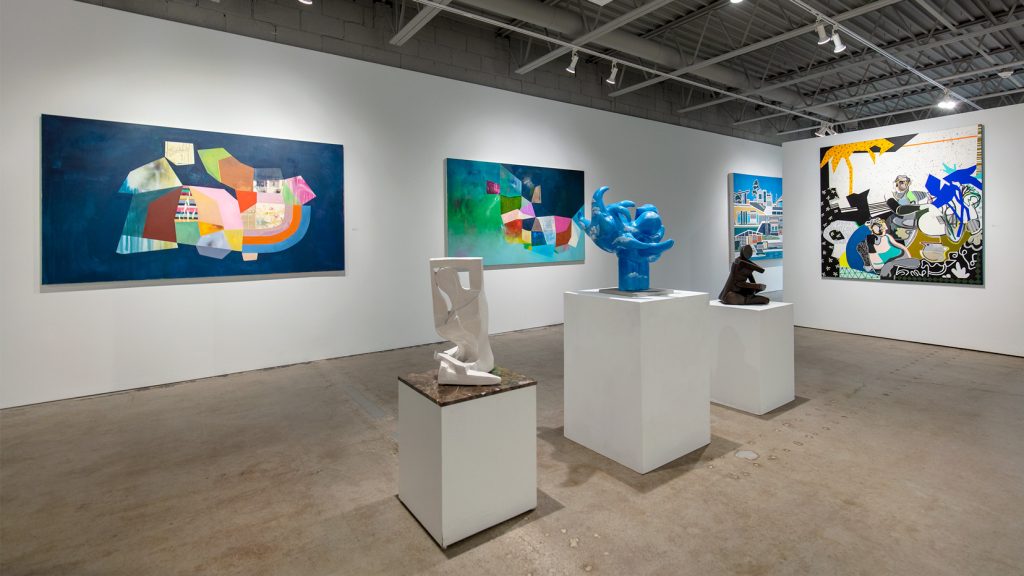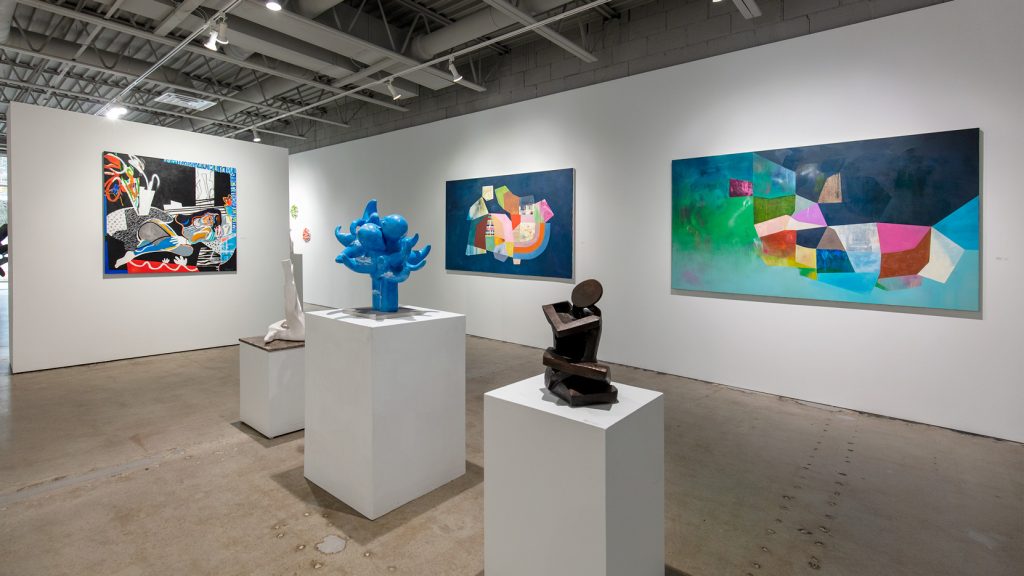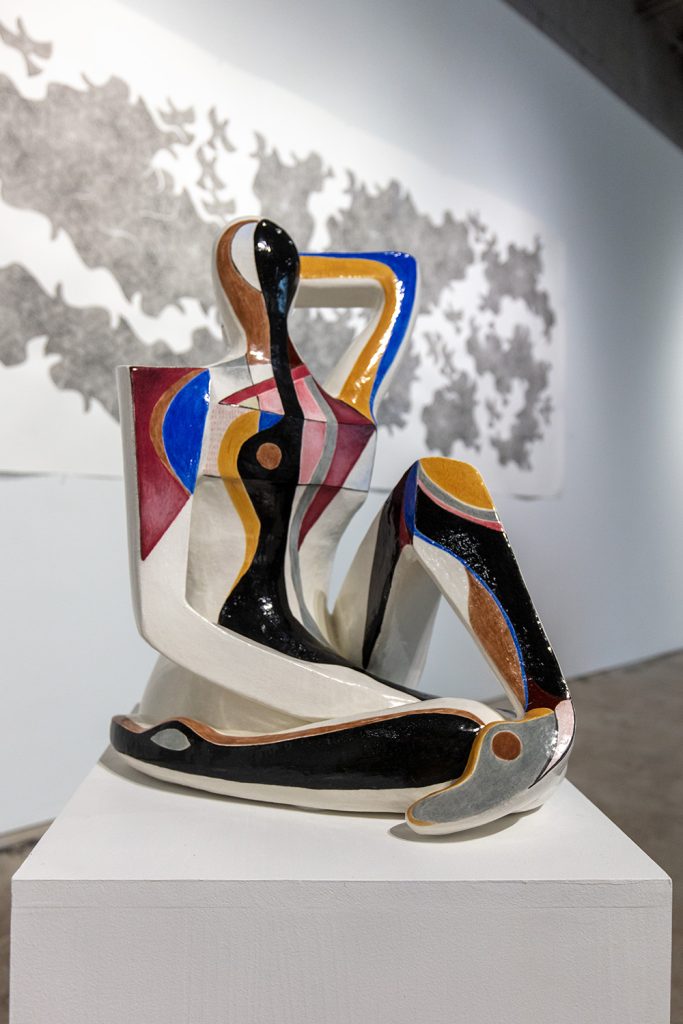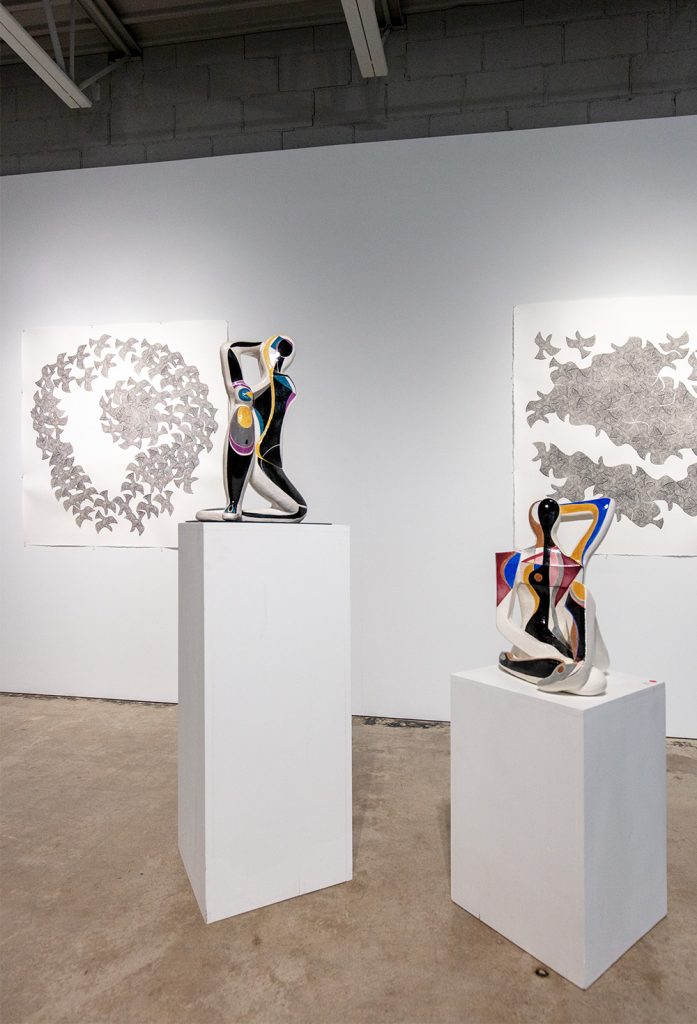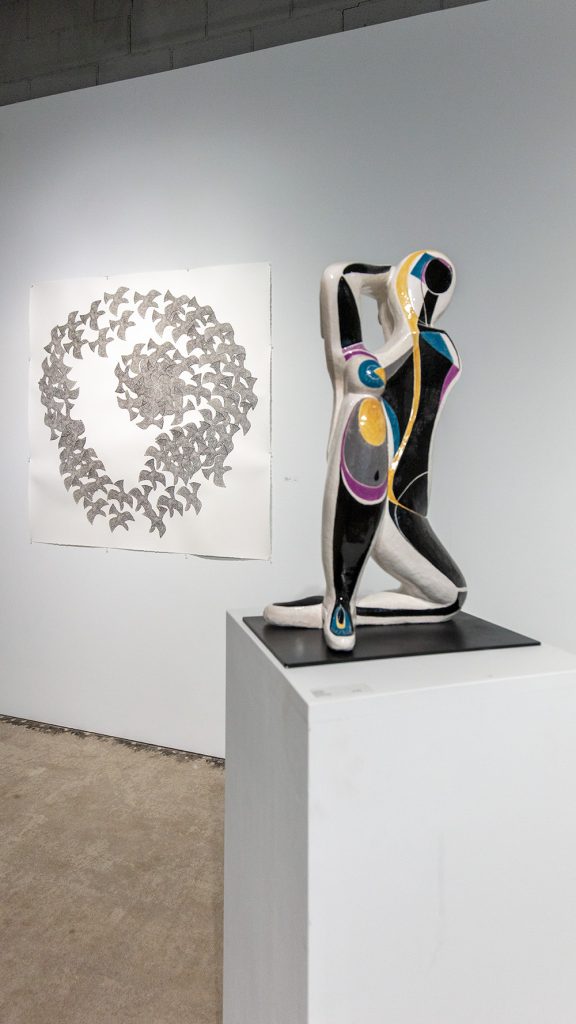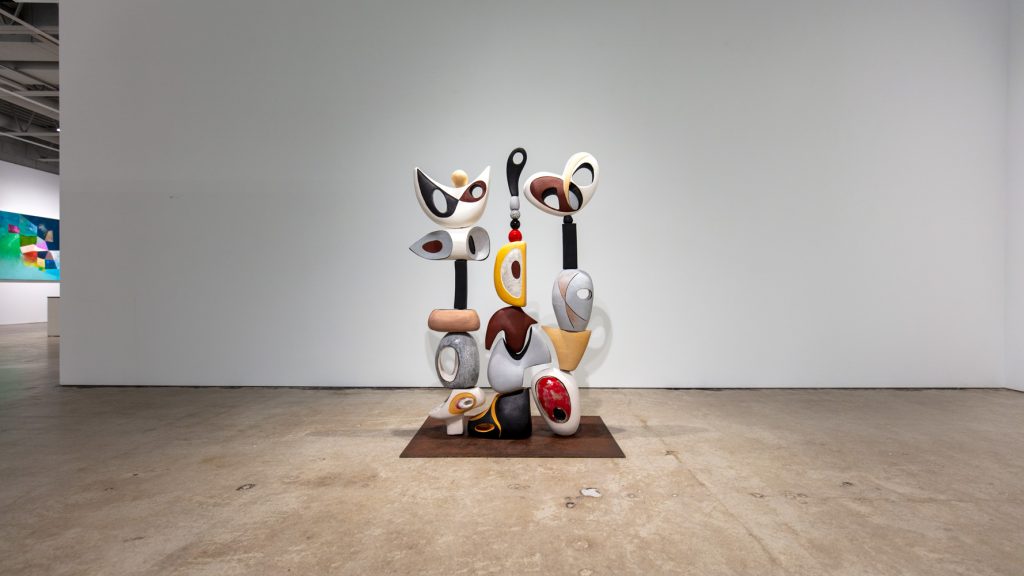TEXT BY MICHAELA MULLIN | VIEW IMAGES
Annick Ibsen: Starlings
In her new exhibit, Starlings, Annick Ibsen is an investigator of subject matter through process and media, dimensional shifts and convergences, and she is excited about the discovery of the axes of sculpture, printing, and painting. She “projects her ideas in three dimensions to find the freedom and movement that printmaking offers via juxtaposing and superimposing elements within her compositions.”
In certain works, form and function work in tandem, including sculpture and painting within and on utilitarian objects. In other new work, Ibsen’s continued focus on birds can be seen in various iterations and media. And her thematic shift from sky to water exhibits both images in relief and counter-relief.
“Aquarium” makes that shift by including small tessellated hexagonal ceramic pieces on steel. Some are black, some are white, some are both, and some have abstract sea flora and fish in black, white, or red. There is much steel, or “negative space,” in this wall installation, creating an openness which evokes feelings of floating, of space (or water) buoying the small components. The modularity also nods to schools of fish, and the way things appear to congregate in the fluid waves.
Ibsen hasn’t left her beloved birds behind, however. “Big Bird” is a large steel outdoor sculpture, very much at odds with the television character the title might conjure. The surface patina of this simple abstract bird is exquisitely imperfect, with what seems to be mineral spots and streaks, and the drawings of weather on its steel surface. The weight of it, at sight, is in keeping with its gravitational poundage, but while it does not appear able to take flight, it is the very grounding and fixity of it, wings spread wide, that gives one a sense of what could be once gravity becomes defied.
Her varied “Flower Pops” are 12 x12 circles of ceramic piece in single colors (though with more than one, you can make each a small color wheel). Their symmetry and density are perfectly balanced, and they create a truly joyful punctum in any room. Each “petal” nestles in toward the center, and the vibrancy and glossiness of the chosen hue vibrates on the eyes like wind might bend a flower, or wings might displace wind.
In Ibsen’s large paper works, “Nuages,” “Mandala,” “The Loop,” and “Ellipse,” the monotypes collaged beside and overlapping on watercolor paper make a subtle textural movement, and also are the works in the show that are “moving” the most. Ibsen says, “I wanted to express more of the movement of these birds, which is difficult to do in ceramics, so I ended up printing and cutting out hundreds of monotypes that are another type of bird murmuration.” And the murmuration here is definitely more intricate—small and quiet motion that accumulates into a more expansive traveling. The negative paper space evokes a feeling of floating/flying, of truly open space and sky.
The nudes that Ibsen continues to explore have evolved, and she has moved away from monochromatic whites; she has decided to explode color. “Sylphide” poses with black, yellow, and purple pattern, while “I See You” is all red and all repose. Yet within her new sculptural lighting works, she uses the white nude, and lights it from above—with a lightbulb. The light source is surrounded by shades which are painted in black abstract strokes. These sculpture/lamp/paintings, “Ponytail” and “Will It Go Around in Circles,” are reminiscent of the 1950s table lamps, which often combined sculptures of women or animals with large, decorated lampshades. “Ponytail,” especially invokes the hairstyle and pose of a teen or young woman of the middle century.
The large floor sculpture, “Stone Garden”, is a rendering of abstract stones, which Ibsen calls “very midcentury.” The organic shapes form totem-like stacks, perhaps emblematic of modernism’s tall shadow on the contemporary world—and here, shade is good. Or very loose and gravity-defying cairns, marking the reaching of heights and a liberating and hopeful continued defiance. The alternating of shape and size, vertical pieces versus horizontal oval shapes, and the holes within the “stones” all make for an exploratory experience—this garden requires studying from every degree of its circumference. Let’s call it Art Petrology.
Ibsen hopes to take the viewer “on a sort of English garden tour,” where fish, birds, flowers, and nudes comprise a veritable garden of multi-media art. Stop in to walk the grounds of the gallery space; Starlings is open through Feb. 28th. And mark your calendars for Ibsen’s artist talk on Saturday, Feb. 25th, at 1 pm. She will discuss concepts and process and answer questions. Mimosas and bites will be served.
